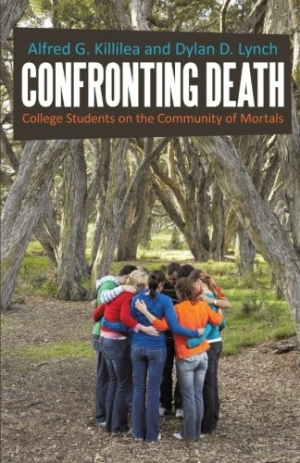Confronting Death
College Students on the Community of Mortals
The wide array of topics and the depth to which they are explored create a valuable introduction to how death is viewed through several ideologies.
From the Black Death’s effect on the human concept of mortality to the Nazis’ definition of who is human, from child soldiers to Kurt Vonnegut’s Player Piano, the range of fascinating ideas proffered in Confronting Death results in a mind-expanding exploration of life’s biggest questions. That eighteen college students can write with such depth about community and mortality is impressive—though some of their essays are more effective than others, and all are controversial in some way. The book does not attempt to answer the question of the meaning of life (not that one should expect anything to), but it does identify attitudes toward death as viewed through several different ideologies.
Some of the students have a better grasp on grammar and the art of essay writing than others. In any case, it is not the mechanics of the writing but the way the writers present their arguments and evidence that leaves an impression—both positive and negative. “Christopher Hitchens and Death,” for instance, offers several quotes from Hitchens, an author and journalist who died in 2011, and derives meaning from them in the context of his illness and philosophical ideologies—an intelligent and provocative piece. Meanwhile, “Blood Out: Nihilism in Gang Culture” attributes a nihilistic view of death to the prevalence of homicide in gang culture while simultaneously asserting that “gangs reject moral codes and ethical values for their own set of values, such as brotherhood, respect, and territory” and that “gang members affirm that life has no real meaning.” This seemingly contradictory statement, as well as others like it throughout the book, weakens some of the essays’ contentions.
Overall, the book has a slant toward the mainstream American political view, and it expresses a belief that citizens’ attitudes toward death are governable; as a matter of fact, the back cover states, “At a time when American politics suffers from deep ideological divisions that could make our nation ungovernable, our mutual mortality may be the most potent force for unifying us and helping us to find common ground.” This sentence sums up the aim of the book: to explore current attitudes toward death and explain why communities should expunge ideologies that appear to pin people against each other. Obviously, not everyone will agree with this assertion.
In a book about societal attitudes toward death, it is an unusual choice to avoid a discussion of religion (except in the cases of Islamic Jihadists and atheism). This is not a comprehensive exploration of death, even with the surprising scope of topics, but it is a fantastic and eye-opening primer for those seeking a starting point for further research. Some may certainly disagree with the arguments, but there is value in the thought-provoking concepts the students introduce. This will definitely be a conversation starter.
Reviewed by
Aimee Jodoin
Disclosure: This article is not an endorsement, but a review. The publisher of this book provided free copies of the book and paid a small fee to have their book reviewed by a professional reviewer. Foreword Reviews and Clarion Reviews make no guarantee that the publisher will receive a positive review. Foreword Magazine, Inc. is disclosing this in accordance with the Federal Trade Commission’s 16 CFR, Part 255.

